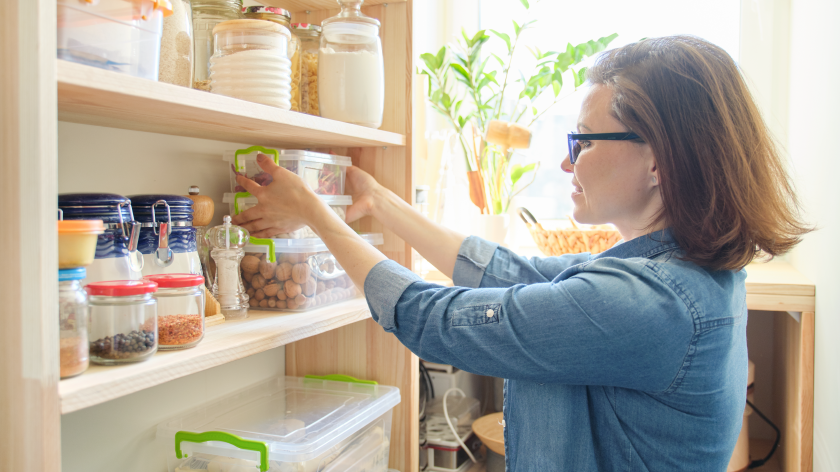There’s no shortage of articles about healthy eating, and many have similar takeaways: eat various fruits and vegetables, make at least half your grains whole-grain and reduce added fats and sugars. The same points hold true when you are eating for convenience, relying on items from the pantry and freezer. Limited access to fresh produce and choice-cut meats doesn’t mean having to sacrifice nutrition. We can still prioritize a healthy, nutrient-rich diet.
Stocking a wholesome pantry requires some prep work and changes in grocery choices over time. Still, there are ways to make what you have on hand healthier, too. The main goal when buying and using non-perishable and frozen food items is limiting added salt, fat and sugar.
- Choose no-salt-added canned goods: If possible, stock no-salt-added canned beans and vegetables in your pantry. If you’re using products that have added salt, rinse the items to reduce the amount of added sodium by up to 40%.
- Balance your sodium (salt) intake for the day: Since many processed and shelf-stable foods have some sodium added, take extra care to choose low-sodium foods throughout the day. For reference, products with 20% Daily Value of sodium on the food label are considered high sodium, and foods with less than 5% DV for sodium per serving are considered low sodium. Many whole foods are naturally salt-free. Make it a habit to assess the sodium in the foods you’re eating.
- Aim for food group variety in your meals: Do you have a protein, a veggie and a quality carbohydrate? Often the vegetable group is limited when it comes to grab-and-go foods. Consider adding extra frozen vegetables to a meal, like tossing an additional handful of frozen broccoli into a chicken stir fry. Or try adding garbanzo beans and almonds to a convenient salad kit.
- Balance your energy intake: Understand that trail mix, granola bars, nuts, and nut butters are great pantry staples. They’re calorie-dense, meaning they have more calories per serving than fruits and vegetables. These whole, high-fiber foods have plenty of nutrition to offer, but it’s important to enjoy smaller portions and eat them alongside options like fruit, vegetables, whole grains and quality proteins.
- Be aware of low-quality food items: There are thousands of processed foods and products available, and more hitting the shelves every year. Use the ingredients list on the food label to assess what each item contains. Look for items made with whole food ingredients and with limited added salt and sugar.
Fortunately, there are more health-conscious food items on the shelf now than ever before. During your next grocery shopping trip, consider how you can set up a healthy pantry. Look for these nutrient-rich, shelf-stable food items to set yourself up for success:
- Whole grains like whole wheat pasta, whole grain crackers, brown rice, farro and quinoa
- Canned fruits packed in 100% fruit juice
- Canned beans, vegetables and proteins without added salt or labeled “low sodium.”
- Frozen fruits, vegetables or cooked whole grains without added salt and sugar
- Dehydrated fruit without added sugar
If you’re hesitant to buy any but fresh produce, you can rest easy knowing that the nutrient content of canned and frozen foods can be equal to their fresh counterparts. At times, some vitamins are even higher since frozen and canned produce is packaged and preserved at peak freshness. Without any exposure to light or air, they can retain most of their nutrient quality. This means the vitamin and mineral content in these fruits and vegetables is retained until we eat and prepare them!
Keep in mind that foods considered non-perishable may have an extended expiration date, but that doesn’t mean they last forever. Make sure you’re practicing proper food storage safety and follow the first-in-first-out rule, meaning items purchased a while ago should be eaten before items purchased more recently.
Eating well out of your freezer and pantry may require a bit of planning, but it’s not impossible. With a little information and preparation, you can still maintain a balanced, healthy diet. Remember, be creative and think outside the box. Mix and match the items you have on hand to make a balanced meal, or check out this article for some ideas to get you started!

Charlotte Mapes is a Registered Dietitian and a Solutions Consultant with Vitality. She received her BS in nutrition at Michigan State University and received her master’s at the University of Alabama. Food is one of her favorite things and in her free time, loves adventure travel with her husband and senior dog.






